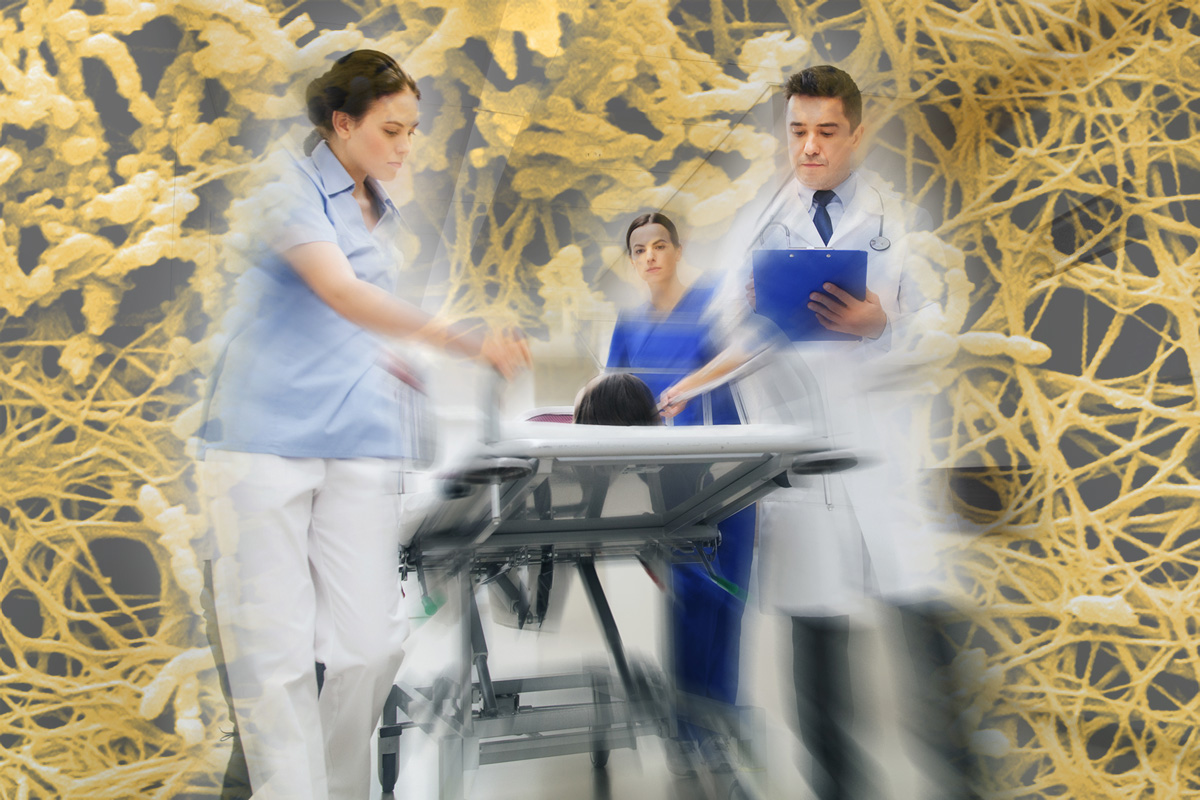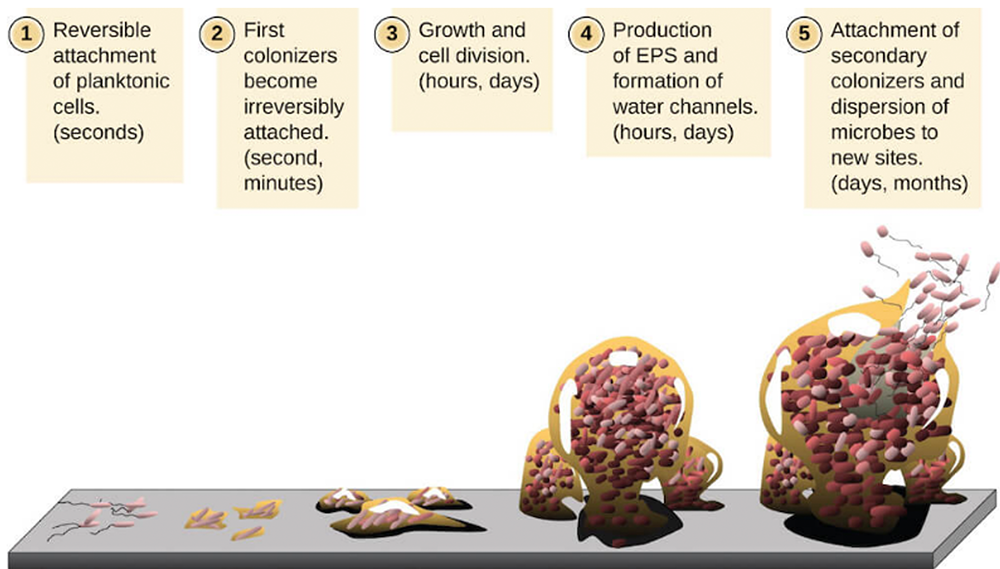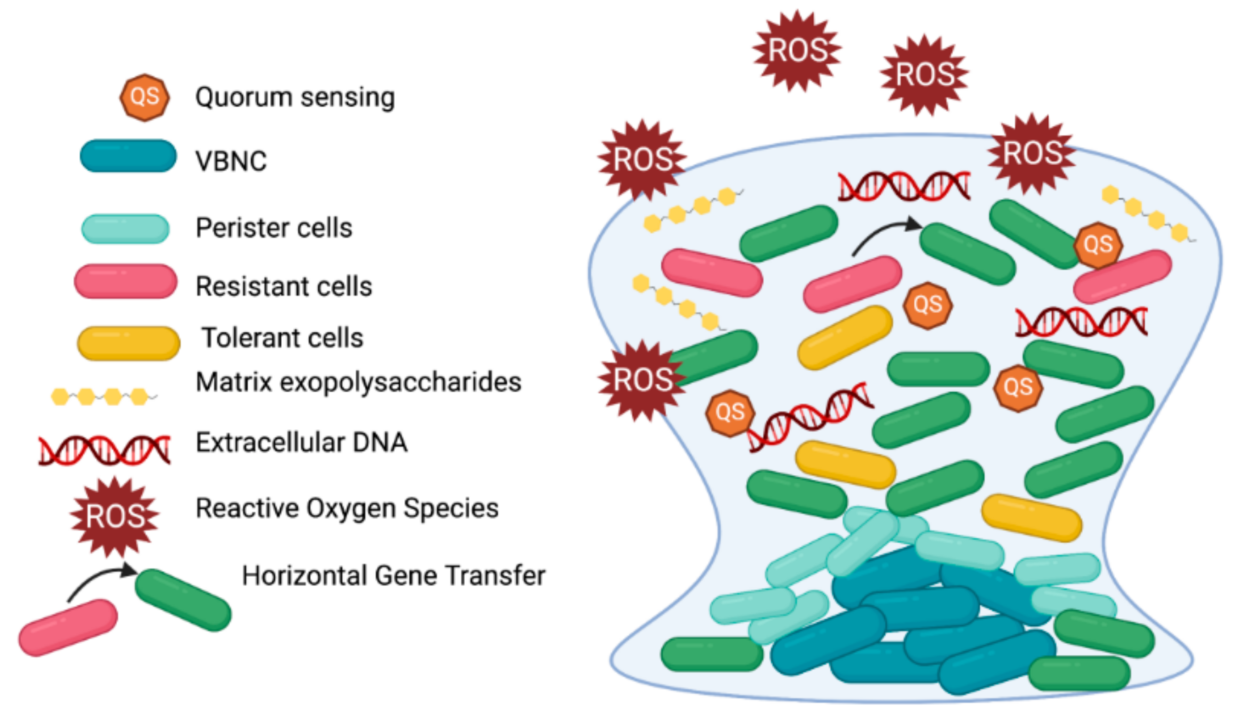Understanding the Hidden Danger of Biofilm

by Rodney E. Rohde, PhD, SM (ASCP)CM, SVCM, MBCM, FACSc, Global Fellow
The microbial battlefront is a complex array of variables in today’s global public health, community, healthcare, and long-term environmental settings. While the ongoing antimicrobial resistance (AMR) issue is at the top of the list of concerns, there is another often hidden war going on at the surface.
On that surface sits one of the most difficult enemies ever to face the world – biofilm. A biofilm is a three-dimensional structure formed after microorganisms sense and adhere to surfaces, followed by subsequent colonization and production of an extracellular polysaccharides matrix (EPS).
This so-called battlefront, the surface – alongside the many mechanisms of microbial attachment to surfaces – has long been a topic of study. Surface charge density, surface wettability, surface roughness, surface topography, and surface stiffness are areas rich for research regarding biofilm prevention.
Human Infections and Biofilm
This enemy has existed in nature, likely for thousands of years, adhering to a variety of surfaces, including rocks in streams (slime), mammalian teeth, roots of plants, and even in water pipes. Biofilms may be the most adaptable microbial feature in nature. However, when the associated microbes are pathogenic, this ability to aggregate into biofilms becomes a significant virulence factor. Research discusses that most human infections are likely biofilm mediated.
Most problematic are medical devices (e.g., knee replacements, catheters, pins and screws, etc.) or tissue related (e.g., chronic wounds, “staph” skin infections, endocarditis, chronic otitis media, cystic fibrosis lungs). Biofilms can affect antimicrobial efficacy and our immune response, contributing to antimicrobial resistance and allowing the establishment of persistent/chronic infections.
The Biofilm Structural Makeup
The formation of a biofilm usually begins when a microbial group senses a given surface and sticks to it. Subsequent colonization and production of the EPS solidify the structure. The sticky and glue-like EPS matrix is built to behave as a “smart community” by bacteria (e.g., Pseudomonas, Staphylococcus, etc.) and some fungi (e.g., Candida auris, etc.). Like enemies, the microbes become entrenched, and the biofilm community creates actual channels, much like trench warfare. There is a hidden and protected route from the external environment to the internal surface environment for the delivery of nutrients and waste byproducts, allowing for ongoing colonization and maturation for the embedded bacteria. Even more diabolical – once the microorganisms mature, they shed and move from the matured biofilm to join another biofilm community or pioneer a new one.

Figure 1. How biofilms are formed. Source: Openstax
Antimicrobial Resistance is Amplified by Biofilms
Biofilms and AMR are highly complex and likely synergistic in nature, which may significantly drive resistance. Bacteria living in a biofilm can exhibit a 10 to 1,000-fold increase in antibiotic resistance compared to similar bacteria living in a planktonic state (unattached to surfaces).
There are three main drivers for biofilms amplifying AMR in bacteria and fungi: (1) resistance at the biofilm surface, (2) resistance within biofilm microenvironments, and (3) resistance of bacterial “persister” cells.

Figure 2. Mechanisms leading to resistance occur simultaneously within a mature biofilm. Source: Wikimedia Commons
This hidden enemy is entrenched not only in the hospital setting but also in other healthcare and community settings. Further, research continues to show that biofilms create an ideal environment for resistance mechanism exchange. As clinical microbiology, antimicrobial stewardship and infection prevention programs continue to evolve alongside environmental services (EVS), it will be increasingly important to understand the dangers posed by biofilms and how preventing the transfer and acquisition of biofilm-causing organisms can directly reduce the spread of AMR infections. Industries involved in diagnostics, cleaning, disinfection, sterilization, and construction must become primary stakeholders in decision-making to help combat this ongoing war.
Surfaces Matter: A New Approach to Patient Safety
Clean and disinfected surfaces are necessary in the healthcare setting to prevent HAIs, yet this basic requirement is a challenge. HSI is the only organization focused on the role surfaces play in this healthcare crisis. The Institute is actively developing minimum standard test methods and criteria for surface materials and patient care products to validate if they can be quickly and safely disinfected.
We need your help to continue this critical, life-saving work. Please contribute to our Spring Fundraiser today.
Donate Now
References:
Prinzi Andrea & Rohde R.E. The Role of Bacterial Biofilms in Antimicrobial Resistance. American Society of Microbiology, Bugs and Drugs article. March 6, 2023. https://asm.org/Articles/2023/March/The-Role-of-Bacterial-Biofilms-in-Antimicrobial-Re
Rohde R.E. The Microbial Battlefront: Surfaces. Invited Monthly Columnist for “Under the Microscope” – Healthcare Hygiene Magazine. April 2022, Volume 4, Issue 4. p. 10. https://joom.ag/NbWd/p10
Prinzi A., Hunt L., Goff D., & Rohde R.E. Antimicrobial Resistance: A Review of a Broad-Spectrum Problem and Future Needs. InfectionControl.TIPS April 27, 2022. https://infectioncontrol.tips/2022/04/27/antimicrobial-resistance-a-review-of-a-broad-spectrum-problem-and-future-needs/
As a 501(c)(3) non-profit organization, we rely on donations to save lives. We need your help.
Please consider donating, becoming a member, or exploring corporate sponsorship through your workplace today.

